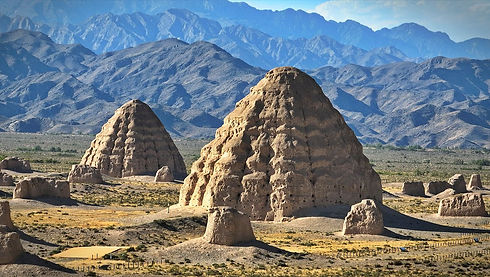top of page

Why Ningxia is taking over the wine industry


Amidst the stark, unyielding landscape of northwestern China, where the Gobi Desert whispers at the feet of the Helan Mountains, a vinicultural revolution is taking hold. This is the story of Ningxia, a place once defined by its arid, challenging terrain, now carving out a new identity as a global powerhouse of fine wine. The province's meteoric rise is a testament to the transformative power of vision and a unique terroir that forges wines of remarkable character. The long, sun-drenched days and dramatic temperature shifts between day and night imbue the grapes with a vibrant concentration of flavor and a balanced acidity, a duality that speaks of both raw power and delicate grace. This "golden belt" of viticulture is not merely a geographic location; it is a crucible where ambition, innovation, and an ancient land converge to produce liquid poetry.


The Wine Varietals of Ningxia and the Mavericks Gamechangers
Ningxia's viticultural landscape is dominated by familiar international varieties that have found a surprising new home. Cabernet Sauvignon reigns supreme, producing structured and complex red wines with notes of black fruits and spices. It is often blended with Merlot and Cabernet Franc to create Bordeaux-style expressions. For white wines, Chardonnay thrives in the region's climate, yielding bottles with distinctive mineral notes and a refreshing crispness. Increasingly, winemakers are also exploring other varieties like Marselan, a French hybrid that has shown exceptional promise, and Riesling, which brings a lively acidity and aromatic complexity to the region's portfolio.



Several prominent estates are at the forefront of this movement. Silver Heights, a pioneer in the region, is known for its elegant and highly sought-after wines, particularly its "Emma's Reserve" and "The Summit". Another leader is Xige Estate, a younger but ambitious winery with a spectacular, modern-meets-traditional architectural design and a focus on both traditional and experimental winemaking. Meanwhile, Helan Qingxue gained international acclaim in 2011 by winning a coveted trophy at the Decanter World Wine Awards, an event that put Ningxia firmly on the global wine map. Other notable names include Kanaan Winery, known for its Riesling, and Chateau Changyu Moser XV, a joint venture that merges Chinese terroir with Austrian winemaking expertise.
A Sanctuary of Luxury in the Desert

As Ningxia's wine industry matures, so too does its embrace of wine tourism, transforming the rugged landscape into a destination for luxury seekers. The region is developing a network of boutique and high-end hotels that offer more than just a place to sleep; they provide an immersive experience. These establishments are often set directly within the vineyards, allowing guests to wake up to panoramic views of the vines and the Helan Mountains. The architectural designs blend local elements with modern luxury, creating spaces that feel both authentic and indulgent.


Hotels like the Jade Dove Hotel at Xige Estate offer a unique, vineyard-themed retreat with a focus on art, fine dining, and, of course, extensive wine tasting. Guests can partake in educational tours, blending sessions, and cellar visits that offer a deep dive into the world of Chinese winemaking. The experience is not just about the wine itself but also about the serenity of the environment, the tranquility of the desert landscape, and the chance to escape the urban clamor. These luxury sanctuaries are the final, essential element of Ningxia's ascendancy, completing the narrative from a hidden gem to a celebrated wine region and a sophisticated travel destination.



In summary, Ningxia Province's wine tourism aims to be a premier global destination by strategically leveraging its unique terroir, a growing reputation for high-quality wines, and significant government backing. The region is building a holistic experience that goes beyond mere wine tasting, integrating its stunning natural landscape, rich Hui ethnic culture, and the Yellow River's heritage. Ningxia's plan includes developing a "wine tourism corridor" along the eastern foothills of the Helan Mountains, complete with luxurious, architecturally distinct wineries and boutique hotels. By hosting major international events like the Concours Mondial de Bruxelles and the China (Ningxia) International Wine Culture and Tourism Expo, the province is positioning itself on the world stage, attracting both global industry experts and affluent travelers. With a strong focus on high-end offerings, enhanced infrastructure, and a marketing campaign that highlights its unique blend of wine, culture, and eco-tourism, Ningxia is determined to compete with established wine regions like Bordeaux and Napa Valley, making its "purple dream" a reality.
bottom of page





